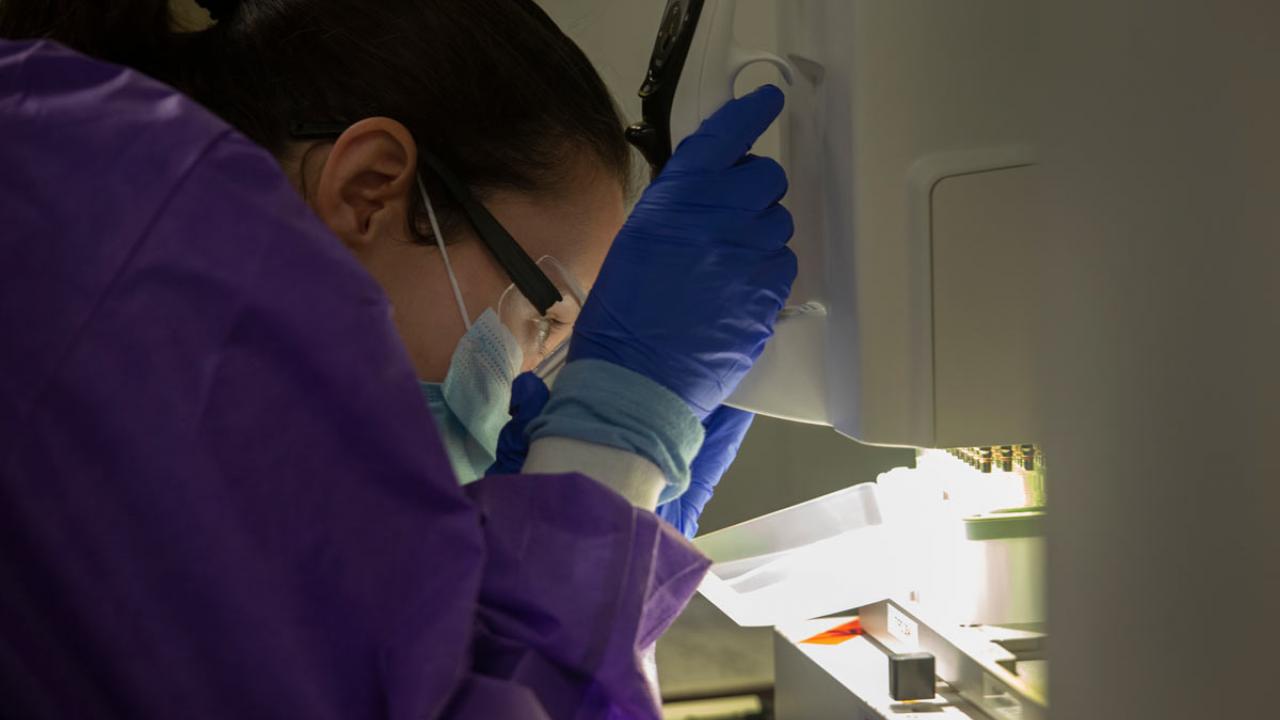UC Davis is “passing the COVID test with flying colors,” MSNBC’s Stephanie Ruhle said, using a play on words as she concluded a recent interview with Professor Brad Pollock, associate dean for public health sciences, about the university’s COVID-19 testing program.
The saliva testing program started Sept. 14 when students began moving into campus housing for fall quarter, and subsequently expanded to serve the community through Healthy Davis Together.
Earlier this month, the UC Davis Genome Center tested the 100,000th saliva sample. Here we take a look at what’s behind the test, and how it came together.
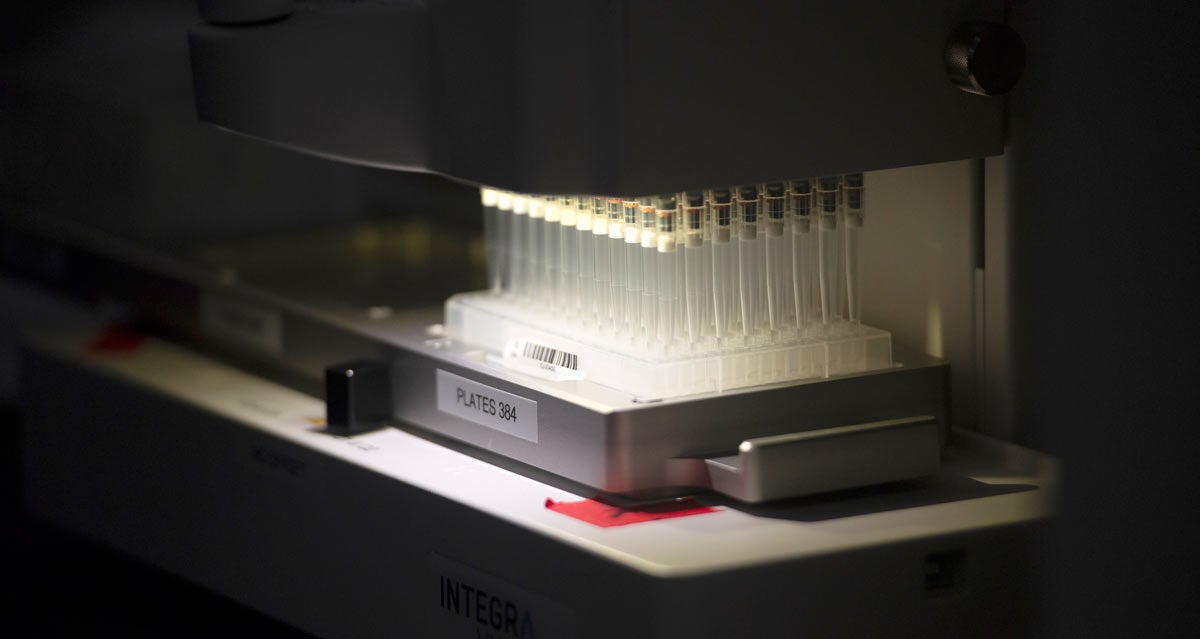
Agricultural genetic technology
IntelliQube high-throughput quantitative PCR machines, using “array-tape” technology, are key to the testing program. Instead of sample tubes or plates with wells, the machines analyze tape printed with thousands of tiny wells, each of which can carry out a PCR reaction.
Originally developed for use in agricultural genetics, array-tape machines can run thousands of PCR tests a day, far more than machines built specifically for medical diagnostics.
Plant sciences professor Richard Michelmore, director of the Genome Center, and his team developed the testing program and proposed it to the campus. Funding came through Aug. 4, just over a month before students would arrive. “This triggered a tremendous mobilization across campus,” Michelmore said.
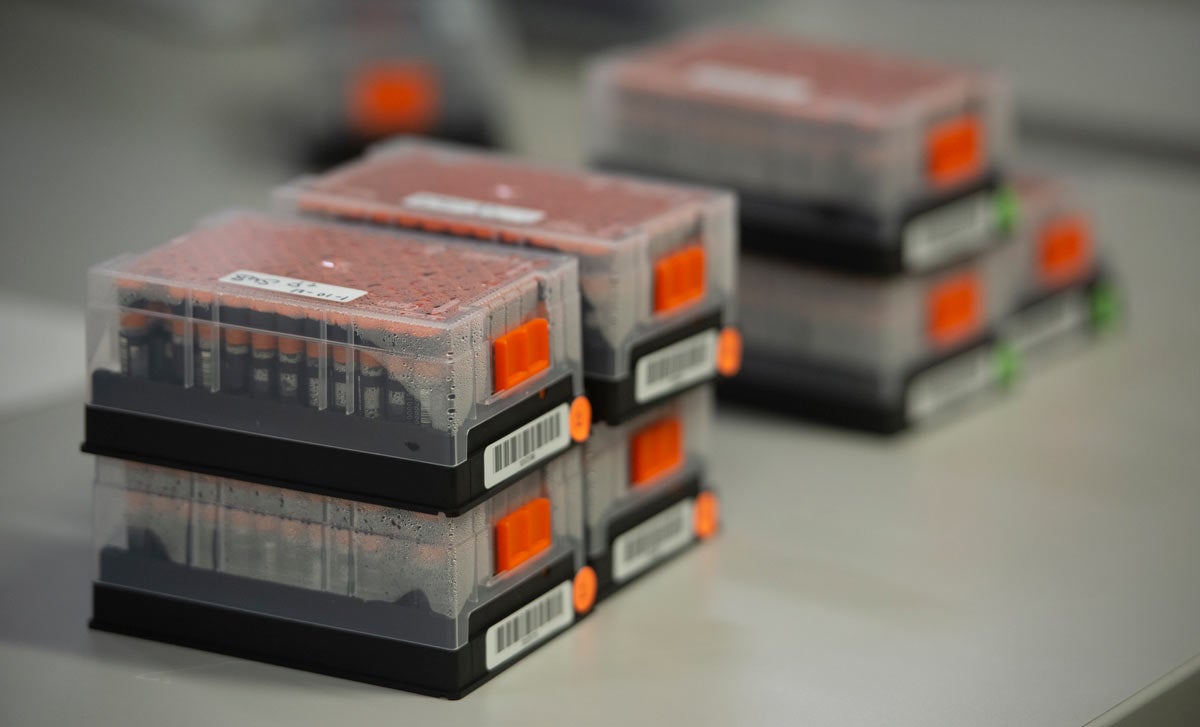
Spitting in a tube
Taking the test involves the simple matter of spitting in a tube and the results are typically returned within one to two days. The test is for people who do not have COVID-19 symptoms: Students with symptoms should go to Student Health and Counseling Services, while others should go to their health care providers.
Testing requires making an appointment — in an online process that produces an individualized barcode, which, upon your arrival for testing is matched to a barcode on your sample tube. Take a sip of water, drip it back into the tube, cap it and you’re done.
The de-identified barcoded tubes are taken to the Genome Center, where the samples are heat-treated to inactivate any virus. SARS-CoV2 virus particles survive well in saliva, Michelmore noted.
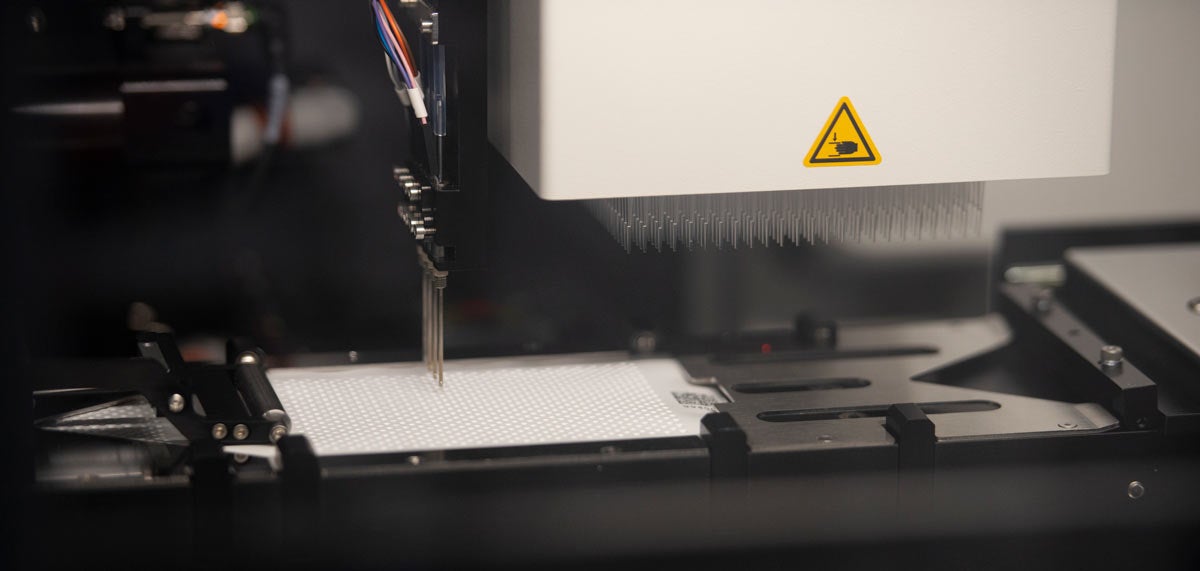
Tenderized
The samples are then treated with papain protease (aka meat tenderizer) to reduce the viscosity of the saliva and transferred into 384-well plastic plates, then automatically transferred to tape. The reaction takes about an hour and a half; each IntelliQube can run about 6,000 tests in a 12-hour day. The results are analyzed with cloud-based UgenTech FastFinder software.
The PCR test is adapted from protocols approved by the Food and Drug Administration. The laboratory is CLIA-approved as an extension of the UC Davis Student Health Center’s laboratory.
The test can detect as few as 15 copies of the virus in a microliter of saliva, below the threshold of what is likely to be an infectious individual. Initially, the saliva tests were compared to nasal swabs taken at the same time and processed at a commercial laboratory, but this was discontinued once the accuracy of the saliva test was confirmed.
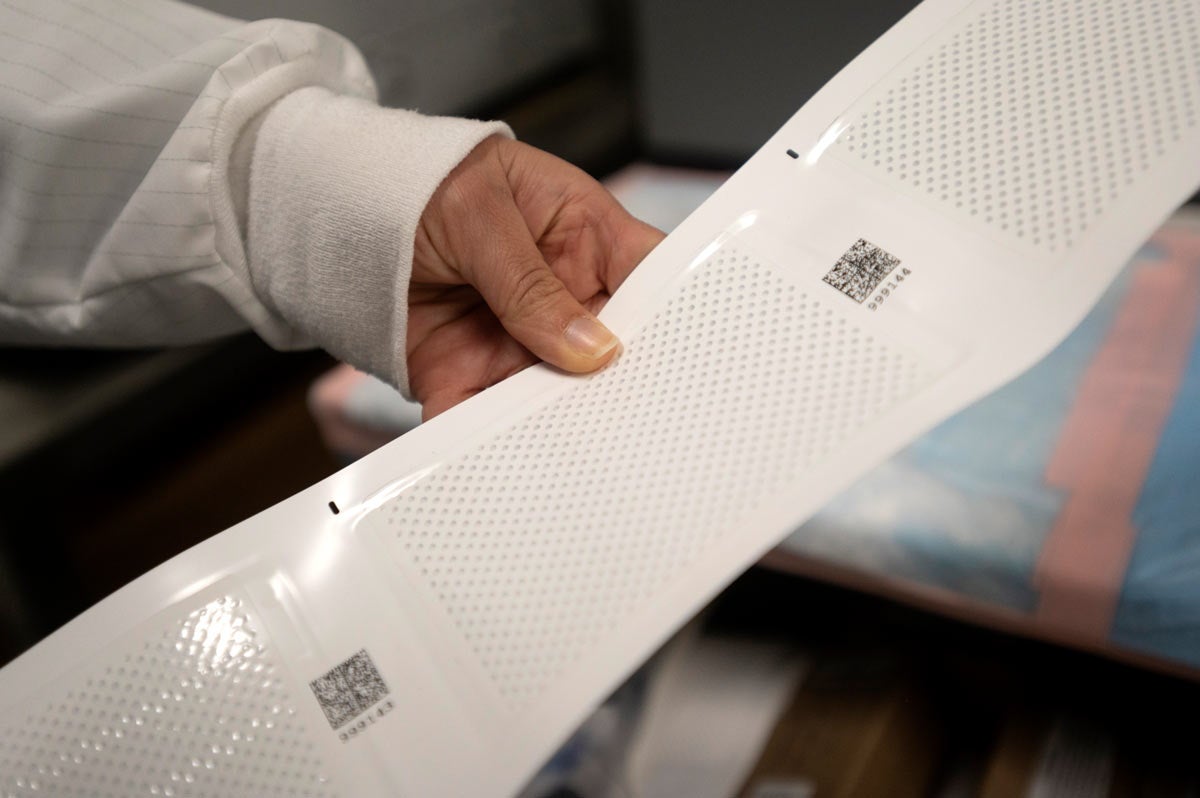
2 teams of staff
Two separate teams of technical staff, led by DNA Technology Core manager Lutz Froenicke, work to run the tests on different days with a reserve team as backup.
Michelmore credited a “massive effort across campus” with getting the testing program up and running, including Ralph Greene of the UC Davis Department of Pathology and Laboratory Medicine, Cindy Schorzmann, medical director of Student Health and Counseling Services, and Sheri Belafsky of the UC Davis Medical Surveillance Program — and many, many others who have worked to stand up and run the testing kiosks, acquire machines and equipment, run tests and analyze and report out results.
While Michelmore has received many inquiries from other universities and businesses, he noted they are not currently planning to expand testing beyond UC Davis, Davis, other locations in Yolo County, and UC Merced due to finite capacity. However, he noted that none of the protocols and workflows are patented and could be replicated by others.
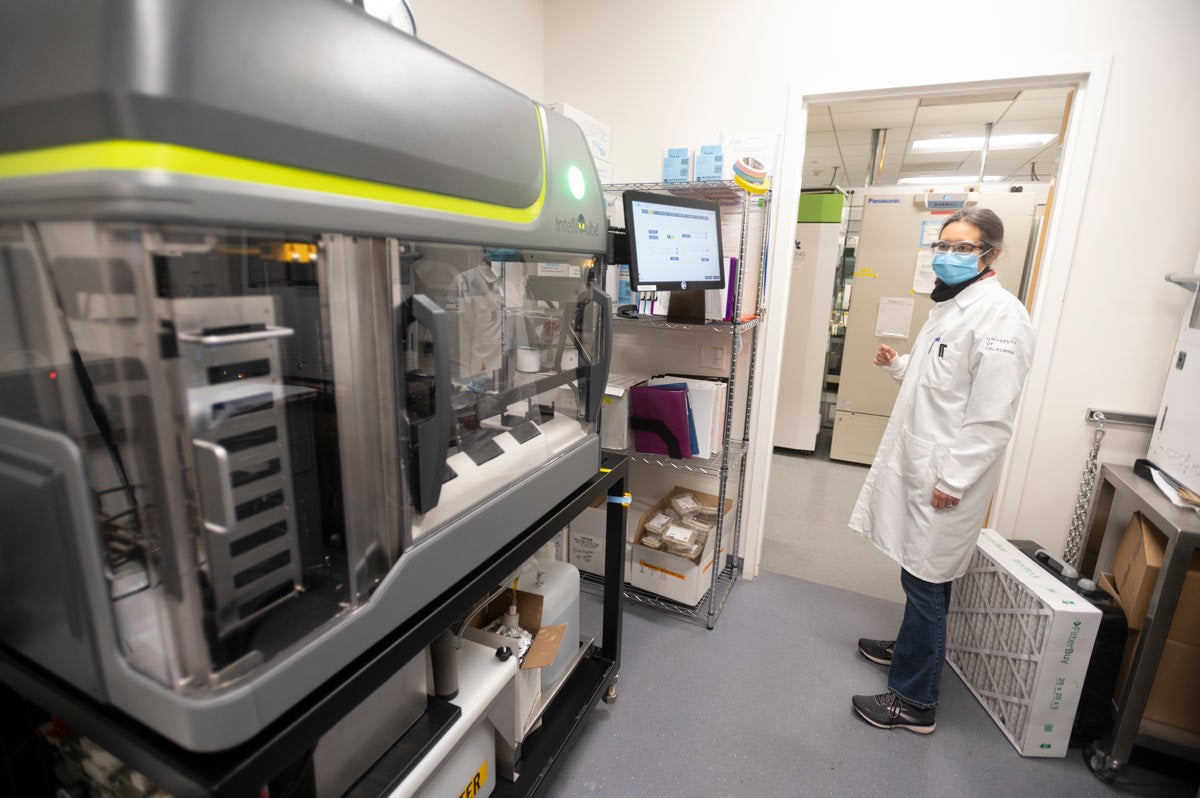
Photos by Gregory Urquiaga/UC Davis
Related
Media Resources
Andy Fell, 530-752-4533, ahfell@ucdavis.edu
